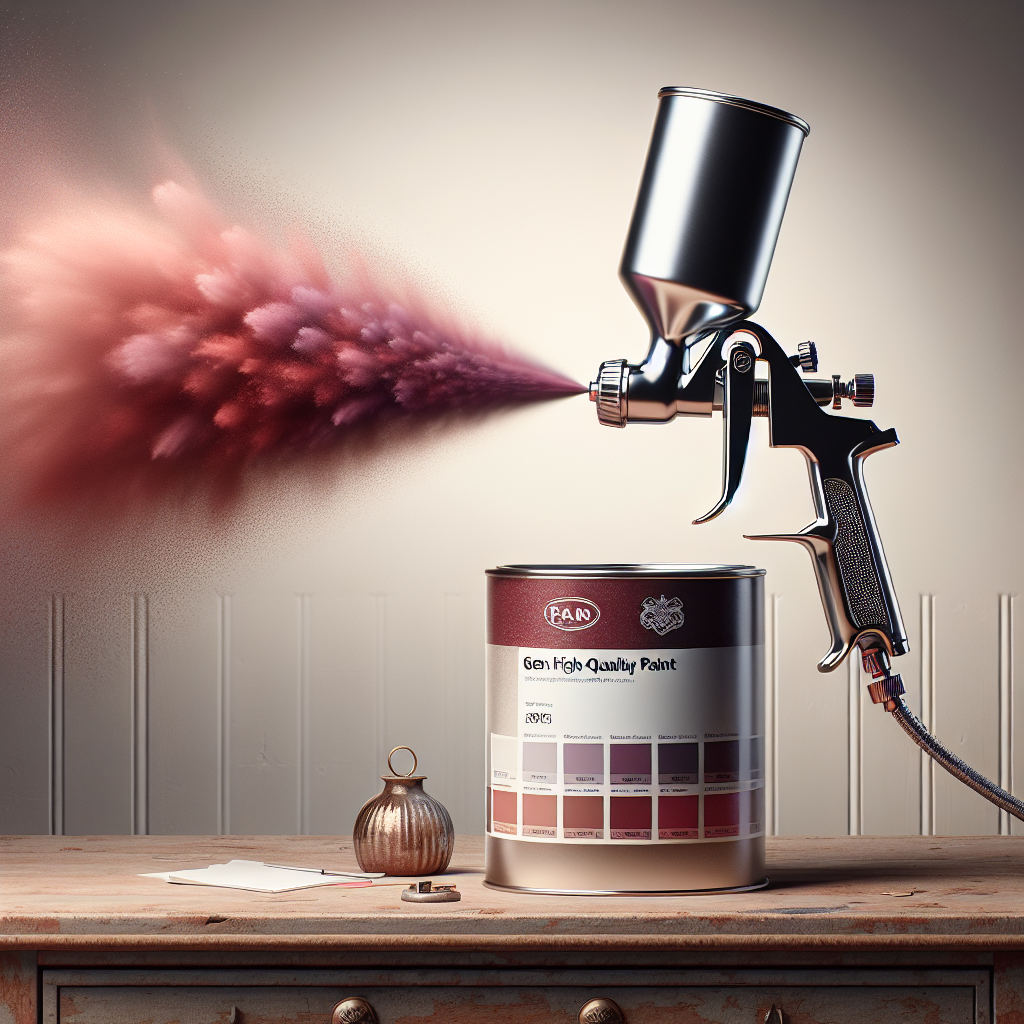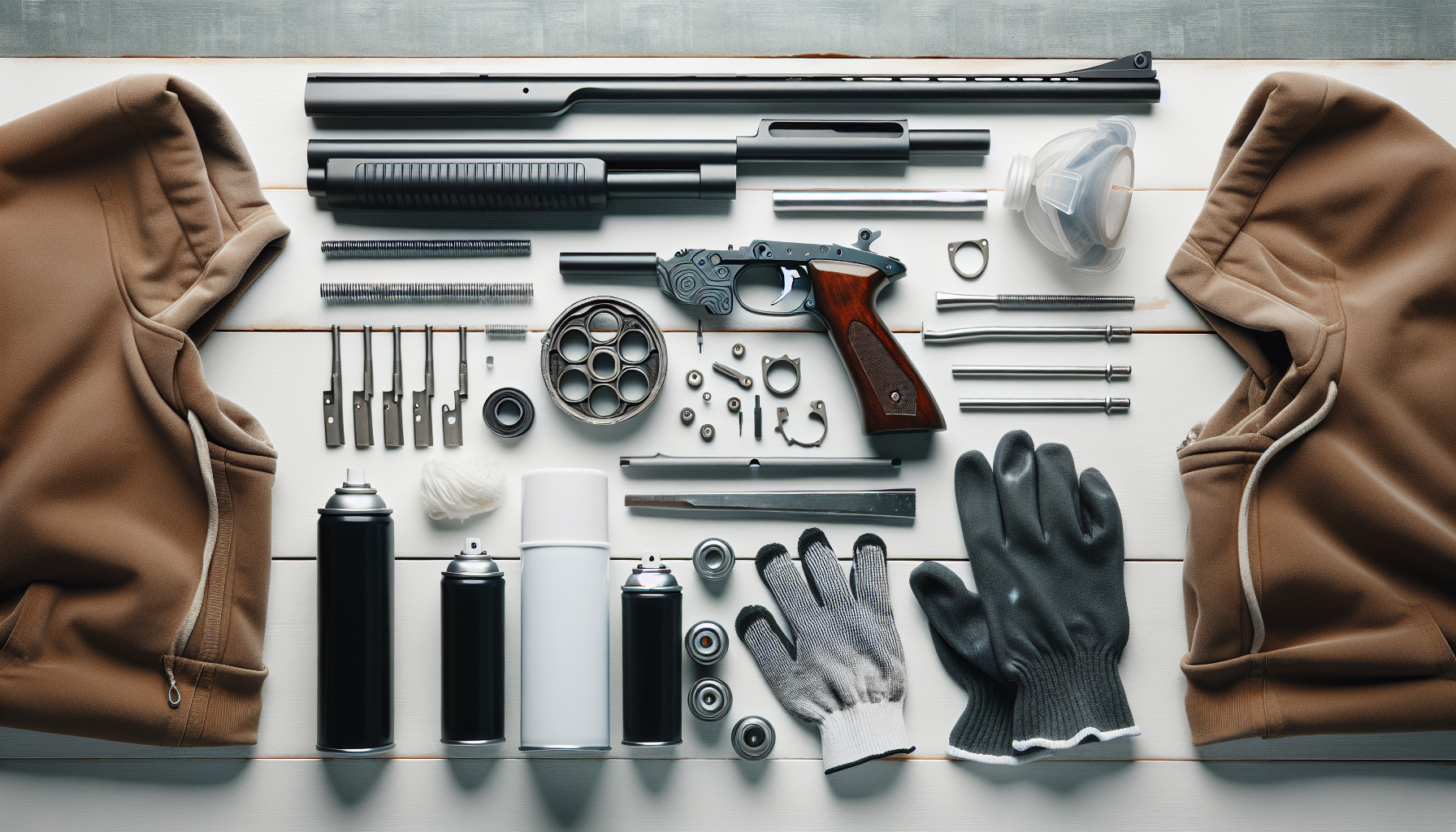Spraying paint can be a convenient and efficient way to achieve a smooth and even finish on your walls or furniture. However, when it comes to Farrow and Ball paint, which is renowned for its superior quality and rich colors, you may wonder if it is suitable for spraying. In this article, we will explore whether you can effectively spray Farrow and Ball paint, as well as discuss the benefits and potential challenges that come with this method. So, if you are looking to achieve a flawless finish with this prestigious paint brand, read on to discover if spraying is the way to go.
Spraying Farrow and Ball Paint: Overview
Spraying Farrow and Ball paint offers several advantages and benefits, but it also requires careful consideration and preparation. This comprehensive guide will provide you with all the necessary information to ensure successful results when spraying Farrow and Ball paint. From the benefits and considerations before spraying to the required equipment and techniques, we will cover every aspect of the process.
Benefits of spraying Farrow and Ball paint
Spraying Farrow and Ball paint can offer numerous benefits compared to traditional brush or roller application methods. One of the key advantages is the ability to achieve a flawless finish. The atomized paint particles produced by the spray system create a smooth and even coating, resulting in a professional-looking result. Additionally, spraying provides a faster and more efficient application process, saving both time and effort. This is especially beneficial when working on larger surfaces or projects.
Another advantage of spraying Farrow and Ball paint is its ability to cover difficult surfaces, such as textured or uneven walls. The spray method allows for better penetration and coverage, ensuring that every nook and cranny is painted evenly. Furthermore, spraying Farrow and Ball paint enables you to achieve a consistent color throughout the entire project, avoiding the potential variations that can occur with brush or roller application.

This image is property of images.unsplash.com.
Considerations before spraying Farrow and Ball paint
While the benefits of spraying Farrow and Ball paint are significant, it is important to consider several factors before proceeding. One limitation to keep in mind is that spraying may not be suitable for all surfaces and projects. Delicate surfaces, intricate details, or areas that require precision painting may be better suited for traditional application methods. It is essential to assess the surface and project requirements before deciding whether to spray Farrow and Ball paint.
Additionally, overspray can be an issue when spraying paint. It is crucial to take proper precautions to protect surrounding areas, furniture, and objects from unintentional paint coverage. This can be achieved by using proper masking techniques and creating a containment area or paint booth. Lastly, ensure that you have the necessary protective gear and materials to ensure your safety during the spraying process.
Required equipment for spraying Farrow and Ball paint
To successfully spray Farrow and Ball paint, you will need specific equipment tailored for this application method. There are several options available, depending on your preferences and project requirements.
One popular choice is an airless paint sprayer, which utilizes high-pressure to atomize the paint and deliver it onto the surface. It is suitable for larger projects and provides quick and efficient coverage. Another option is an HVLP (high-volume, low-pressure) paint sprayer, which uses a lower pressure to produce a finer spray pattern. This type of sprayer is ideal for smaller or more detailed projects.
Alternatively, if you already have a compressor, you can invest in a spray gun attachment. This allows you to spray the Farrow and Ball paint using compressed air, providing more control over the spray pattern and pressure. Whichever option you choose, ensure that it is compatible with the Farrow and Ball paint and consult the manufacturer’s guidelines for optimal performance.
Additionally, you may need additional equipment such as a paint booth or containment area to minimize overspray and protect surrounding areas. Proper protective gear and materials, including respirators, goggles, gloves, and drop cloths, are essential for your safety and to prevent paint from reaching unintended surfaces.

This image is property of images.unsplash.com.
Preparing for Spraying Farrow and Ball Paint
Before starting the spraying process, it is crucial to properly prepare the surface to ensure optimal adhesion and a smooth finish.
Surface preparation
Ensure that the surface is clean, dry, free from dust and debris, and in good condition. Remove any loose paint or previous coatings using appropriate methods such as scraping or sanding. Repair any cracks, holes, or imperfections by filling them with suitable materials and sanding the surface smooth. Proper surface preparation will ensure better paint adhesion and a more durable finish.
Choosing the right paint and finish
Selecting the appropriate Farrow and Ball paint and finish is essential for the desired outcome. Consider factors such as the surface material, the location of the project, and the desired aesthetic. Farrow and Ball offers a wide range of paint options, including different finishes such as matte, eggshell, and gloss. Ensure that the paint and finish you choose are compatible with the spraying process and follow the manufacturer’s instructions for optimal results.
Ensuring proper ventilation
Good ventilation is crucial when spraying Farrow and Ball paint. Ensure that the area where you will be working is well-ventilated by opening windows and doors or using fans to circulate air. Proper ventilation will help dissipate paint fumes and ensure a safer working environment. If necessary, consider using additional respiratory protection, such as a respirator, to further protect yourself from paint fumes.
Spraying Techniques for Farrow and Ball Paint
To achieve the best results when spraying Farrow and Ball paint, it is essential to follow proper spraying techniques and adjust the spray settings accordingly.
Selecting the appropriate spray system
Choose the spray system that is best suited for your project and Farrow and Ball paint. Consider factors such as the spray pattern, pressure, and nozzle size. Different systems may require adjustments or specific settings to achieve optimal results. Consult the manufacturer’s guidelines and experiment with different settings to find the most suitable spray system for your needs.
Adjusting the spray settings
Once you have selected the appropriate spray system, ensure that the spray settings are adjusted correctly. The spray pattern, pressure, and nozzle size can significantly impact the final result. Experiment with different settings on a test surface to determine the optimal combination for your specific project. Adjustments may be needed based on the paint viscosity, surface texture, and desired coverage.
Applying thin and even coats
When spraying Farrow and Ball paint, it is crucial to apply thin and even coats for a professional finish. Avoid applying heavy coats, as they can lead to drips, runs, or uneven coverage. Instead, apply multiple thin coats, allowing sufficient drying time between each coat. This will help achieve a smooth and consistent finish.
Avoiding common mistakes
There are several common mistakes to avoid when spraying Farrow and Ball paint. These include holding the sprayer too close to the surface, moving too quickly or too slowly, and not overlapping the spray strokes adequately. Practice proper spraying techniques and take your time to ensure a flawless finish.

This image is property of images.unsplash.com.
Tips for Achieving Best Results
To achieve the best results when spraying Farrow and Ball paint, consider the following tips:
Testing on a sample surface
Before starting the actual project, it is advisable to test the spraying techniques and paint application on a sample surface. This will allow you to experiment with different settings, adjust your technique, and ensure the desired outcome before proceeding to the main project.
Practicing spraying techniques
Spraying Farrow and Ball paint requires a certain level of skill and practice. Consider practicing on a scrap surface or an inconspicuous area to familiarize yourself with the spray system and achieve better control over the application. This will help minimize mistakes and ensure a more professional-looking finish.
Maintaining consistent pressure
Maintaining consistent pressure throughout the spraying process is crucial for even coverage. Pay attention to the pressure gauge or adjust the settings accordingly to achieve a consistent flow of paint. Inconsistent pressure can result in uneven coverage and affect the final result.
Using proper masking techniques
To protect surrounding areas and minimize overspray, use proper masking techniques. Cover adjacent surfaces, furniture, and objects with drop cloths or plastic sheets, ensuring they are securely in place. Use painter’s tape to mask off edges and boundaries to achieve clean and precise lines. Taking these precautions will help prevent unintentional paint coverage and facilitate a smoother cleanup process.
Spraying Farrow and Ball Paint: Advantages
Spraying Farrow and Ball paint offers several advantages over traditional application methods, making it a popular choice among homeowners and professionals alike.
Delivering a flawless finish
One of the main advantages of spraying Farrow and Ball paint is the ability to achieve a flawless finish. The atomized paint particles produced by the sprayer result in a smooth and even coating, free from brush marks or roller stippling. This creates a professional-looking result and enhances the overall aesthetic of the project.
Saving time and effort
Spraying Farrow and Ball paint can significantly save time and effort compared to traditional brush or roller application methods. The spray application provides faster and more efficient coverage, allowing you to complete projects in a shorter amount of time. This is especially beneficial when working on larger surfaces or projects that require multiple coats.
Covering difficult surfaces
Spraying Farrow and Ball paint is particularly advantageous when it comes to covering difficult surfaces. Texture walls, uneven surfaces, or intricate details can be challenging to paint using traditional methods. The spray method allows for better penetration and coverage, ensuring that every nook and cranny is painted evenly. This results in a more professional finish and eliminates the need for tedious touch-ups.
Achieving a consistent color
Spraying Farrow and Ball paint allows for better color consistency throughout the project. Unlike brush or roller application, which can result in variations in color due to different application techniques and pressure, spraying provides a more uniform distribution of paint. This ensures a consistent color tone and eliminates potential color discrepancies within the same project.

Considerations before Spraying Farrow and Ball Paint
While spraying Farrow and Ball paint offers numerous advantages, it is important to consider certain limitations and exceptions.
Limitations and exceptions
Spraying may not be suitable for all surfaces or projects. Delicate or intricate surfaces that require precision painting, such as detailed woodwork or intricate trim, may be better suited for traditional application methods. Additionally, certain Farrow and Ball paint formulations may not be compatible with spraying, so it is essential to consult the manufacturer’s guidelines and recommendations before proceeding.
Potential overspray issues
Spraying Farrow and Ball paint can generate overspray, which refers to paint particles that do not adhere to the intended surface and settle elsewhere. This can result in unintentional paint coverage on surrounding areas, furniture, or objects. Proper precautions such as masking, containment areas, or paint booths should be taken to minimize overspray and protect adjacent surfaces.
Proper protection for surrounding areas
It is vital to take the necessary steps to protect surrounding areas before spraying Farrow and Ball paint. Cover adjacent surfaces, furniture, and objects with drop cloths or plastic sheets to prevent unintended paint coverage. Use painter’s tape to mask off edges and boundaries for clean and precise lines. Taking these precautions will help minimize cleanup time and avoid potential damage to objects or surfaces.
Equipment and Tools for Spraying Farrow and Ball Paint
To successfully spray Farrow and Ball paint, you will need specific equipment and tools tailored for this application method.
Airless paint sprayer
An airless paint sprayer is a popular choice for spraying Farrow and Ball paint. This system utilizes high-pressure to atomize the paint and deliver it onto the surface. Airless sprayers are efficient and suitable for larger projects, providing quick coverage and even distribution of paint. They are available in various sizes and configurations to accommodate different project requirements.
HVLP paint sprayer
HVLP (high-volume, low-pressure) paint sprayers are another option for spraying Farrow and Ball paint. These sprayers operate at a lower pressure to produce a finer spray pattern and minimize overspray. HVLP sprayers are ideal for smaller or more detailed projects, providing better control and precision. They are known for their efficiency and ability to deliver a smooth finish.
Compressor and spray gun
If you already have a compressor, you can invest in a spray gun attachment to apply Farrow and Ball paint. This option provides more control over the spray pattern and pressure, allowing for customization based on project requirements. Ensure that the spray gun is compatible with the Farrow and Ball paint and follow the manufacturer’s guidelines for optimal performance.
Paint booth or containment area
Depending on the project size and requirements, you may need a paint booth or containment area to minimize overspray and protect surrounding areas. A paint booth is a controlled environment specifically designed for painting projects. It helps contain the overspray and directs it away from unintended surfaces. If a paint booth is not feasible, consider creating a containment area using plastic sheets or temporary barriers to confine the paint particles.
Protective gear and materials
Proper protective gear and materials are essential when spraying Farrow and Ball paint. To ensure your safety, wear a respirator or mask to protect yourself from paint fumes and particles. Safety goggles or glasses will shield your eyes from overspray or debris. Additionally, wear gloves and protective clothing to prevent direct contact with the paint. Drop cloths or plastic sheets should be used to cover the floor and other surfaces to minimize cleanup efforts.

Preparation for Spraying Farrow and Ball Paint
To ensure a successful spraying process and optimal results, proper preparation is key.
Cleaning the surface
Before applying Farrow and Ball paint, ensure that the surface is clean and free from dust, grease, or other contaminants. Use a mild detergent or cleaning solution to remove any dirt or grime. Rinse the surface thoroughly and allow it to dry completely before proceeding with the priming and painting process.
Sanding and priming
Sanding the surface is necessary to create a smooth and clean surface for paint adhesion. Use sandpaper or a sanding block to remove any imperfections, rough areas, or previous coatings. After sanding, wipe the surface clean using a tack cloth or lint-free cloth to remove any sanding residue.
Priming the surface is essential to enhance paint adhesion, improve coverage, and ensure a more durable finish. Choose a suitable primer that is compatible with Farrow and Ball paint and follow the manufacturer’s instructions for application and drying times. Apply the primer evenly using a brush, roller, or sprayer and allow it to dry completely before proceeding with the paint application.
Taping and protecting adjacent areas
To avoid unintentional paint coverage and achieve clean and precise lines, tape off edges and boundaries using painter’s tape. Ensure that the tape is firmly adhered and extends slightly over the edge to prevent paint from bleeding underneath. Cover adjacent surfaces, furniture, or objects with drop cloths or plastic sheets to protect them from overspray or accidental paint splatters.
Creating proper ventilation
Proper ventilation is crucial when spraying Farrow and Ball paint. Ensure that the working area is well-ventilated by opening windows and doors, or using fans to circulate air. This will help disperse paint fumes and create a safer environment for painting. If necessary, consider wearing a respirator or mask to further protect yourself from paint fumes and particles.
Spraying Techniques for Farrow and Ball Paint
Mastering proper spraying techniques is essential to achieve the best results when using Farrow and Ball paint.
Adjusting spray pattern and pressure
Before starting the actual painting process, adjust the spray pattern and pressure on a test surface or scrap material. Depending on the desired effect and coverage, you may need to adjust the nozzle or gun settings to achieve a narrow or wide spray pattern. Experiment with different pressure levels to achieve the desired amount of paint flow and atomization.
Maintaining consistent strokes
To achieve an even and professional finish, maintain consistent strokes while spraying Farrow and Ball paint. Keep the spray gun or nozzle moving at a consistent speed while overlapping each stroke slightly. This will help ensure uniform coverage and minimize the appearance of lines or streaks.
Overlapping and blending
When spraying Farrow and Ball paint, it is crucial to overlap each stroke slightly to ensure even coverage. Overlapping helps to blend the paint and create a seamless finish. Pay attention to gradual transitions and avoid creating hard edges or visible lines. Practice this technique on a test surface before proceeding to the main project.
Avoiding common mistakes
There are several common mistakes to avoid when spraying Farrow and Ball paint. These include holding the sprayer too close to the surface, which can result in uneven application or paint splatter. Conversely, holding the sprayer too far may lead to insufficient coverage or dry patches. Additionally, moving the sprayer too quickly or too slowly can affect the evenness of the paint application. Practice proper spraying techniques and be mindful of these potential mistakes.
Troubleshooting and Tips for Spraying Farrow and Ball Paint
Despite careful preparation and technique, issues may arise during the spraying process. Here are some troubleshooting tips for common problems and general maintenance tips for spraying Farrow and Ball paint.
Dealing with clogs or blockages
If the spray system becomes clogged or experiences blockages, it can affect the paint flow and result in an uneven application. To resolve this issue, clean the spray gun or nozzle thoroughly using appropriate cleaning solutions or solvent. It may be necessary to disassemble the spray system and remove any paint residue or debris causing the blockage.
Managing overspray
Even with proper precautions, overspray can occur, especially in windy conditions or when using high-pressure spray systems. To manage overspray, adjust the spray pattern, pressure, or nozzle size to minimize paint mist. Consider using additional containment measures such as creating a paint booth or using a containment area to confine the paint particles.
Fixing uneven coverage
If you notice uneven coverage or dry patches after spraying Farrow and Ball paint, you may need to apply additional coats. Allow the previous coat to dry completely before applying subsequent coats to avoid disturbing the wet paint. Apply the additional coats using the same spraying techniques to ensure a consistent and even finish.
Cleaning and maintaining equipment
Proper cleaning and maintenance of the spray equipment are essential to prolong its lifespan and maintain optimal performance. After completing the painting process, clean the spray gun or nozzle thoroughly using appropriate cleaning solutions or solvent. Disassemble the spray system if necessary and remove any paint residue or debris. Follow the manufacturer’s guidelines for specific cleaning instructions and maintenance recommendations.
In conclusion, spraying Farrow and Ball paint can provide several benefits, including a flawless finish, time and effort savings, coverage for difficult surfaces, and consistent color results. However, it is important to consider limitations, overspray issues, and proper protection for surrounding areas. When spraying Farrow and Ball paint, ensure that you have the necessary equipment and tools, properly prepare the surface, and follow spraying techniques to achieve optimal results. By following the outlined steps and tips, you can successfully spray Farrow and Ball paint and achieve a professional-looking finish.



